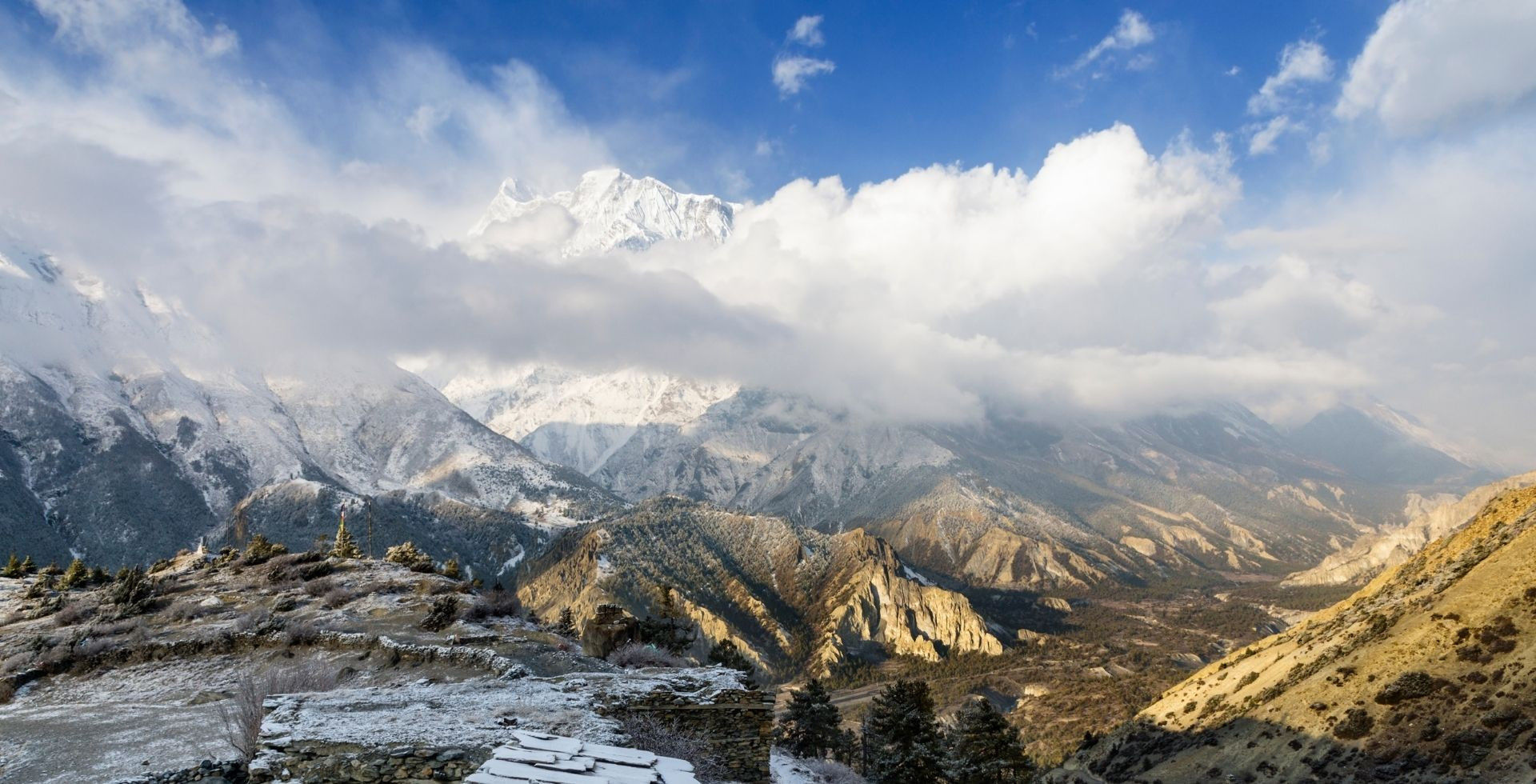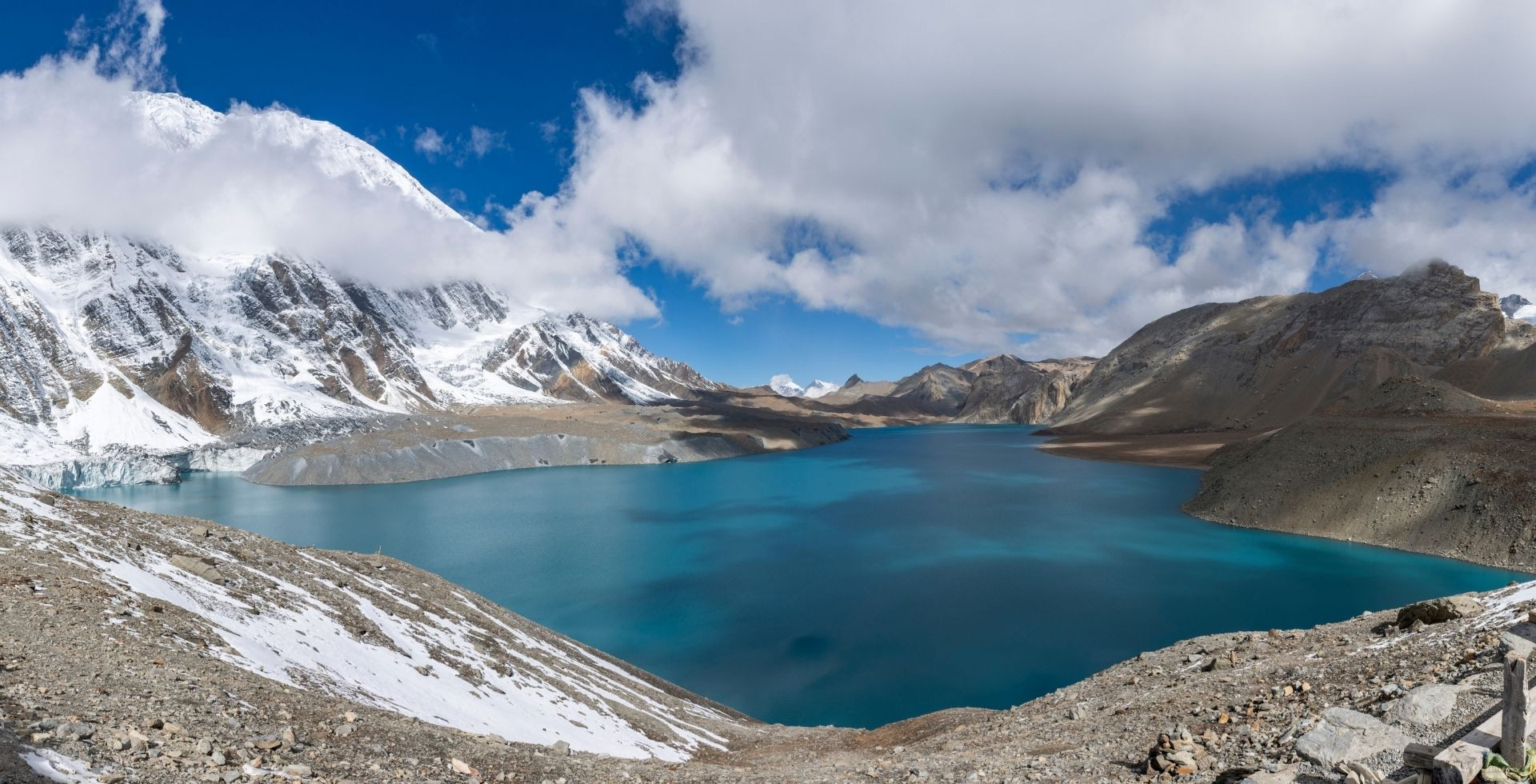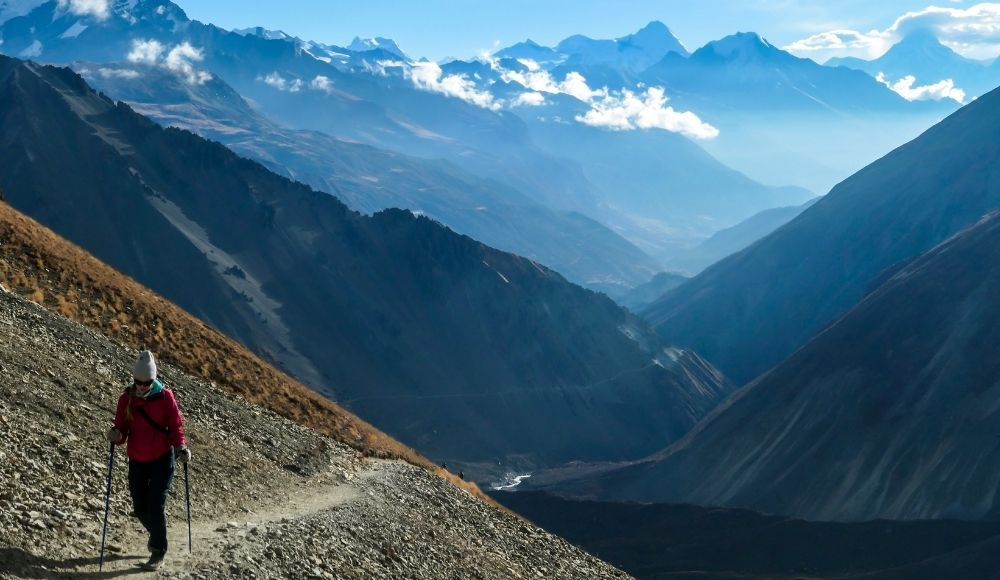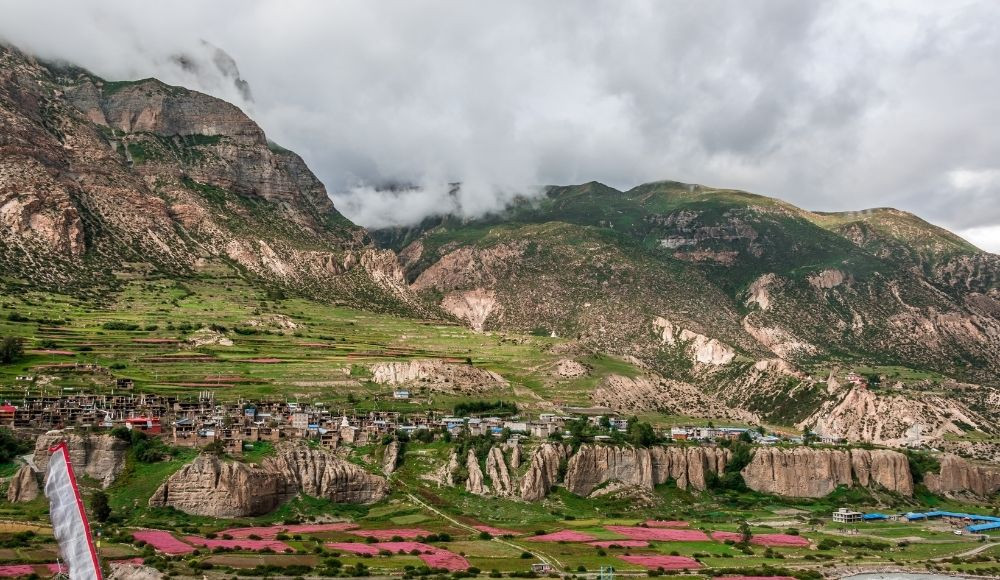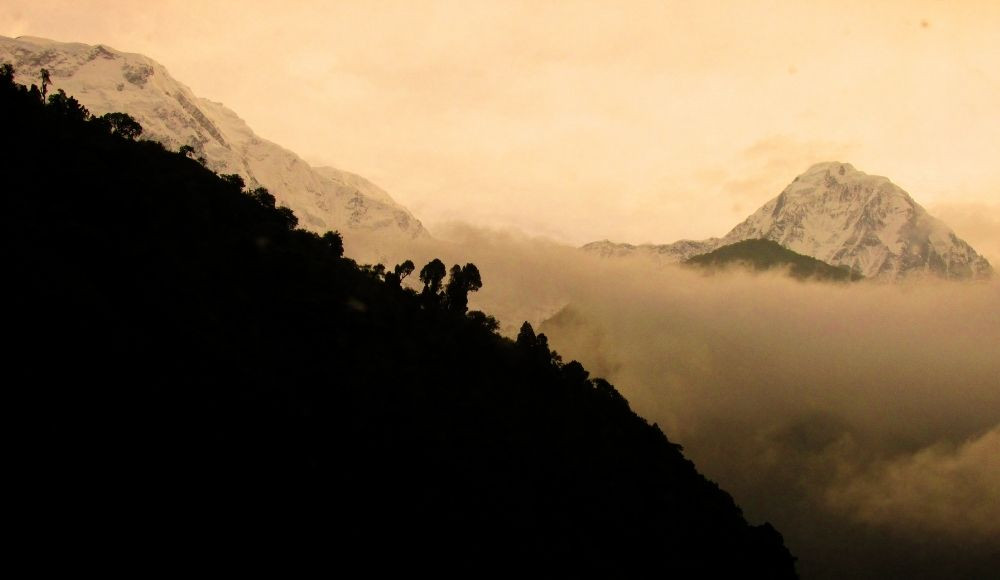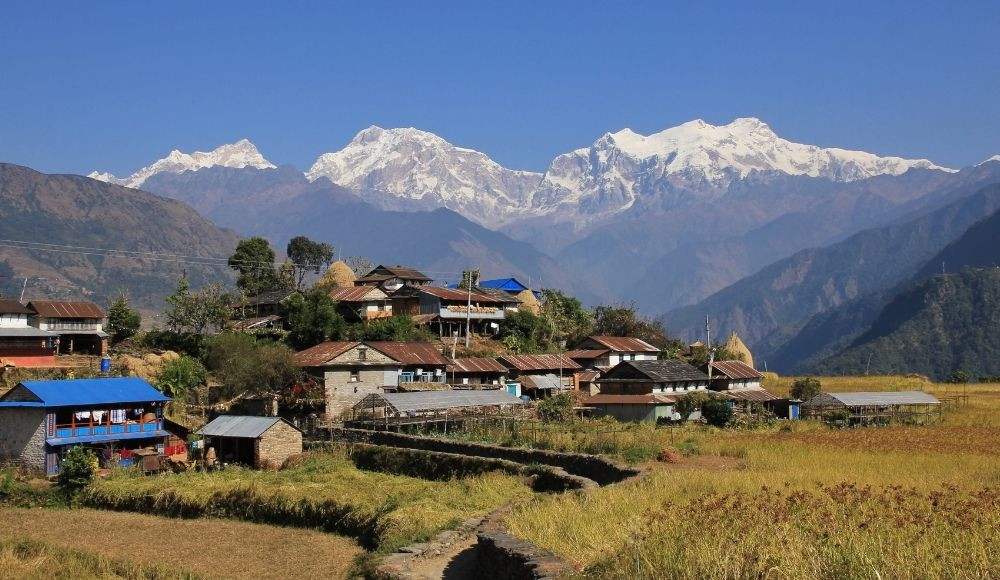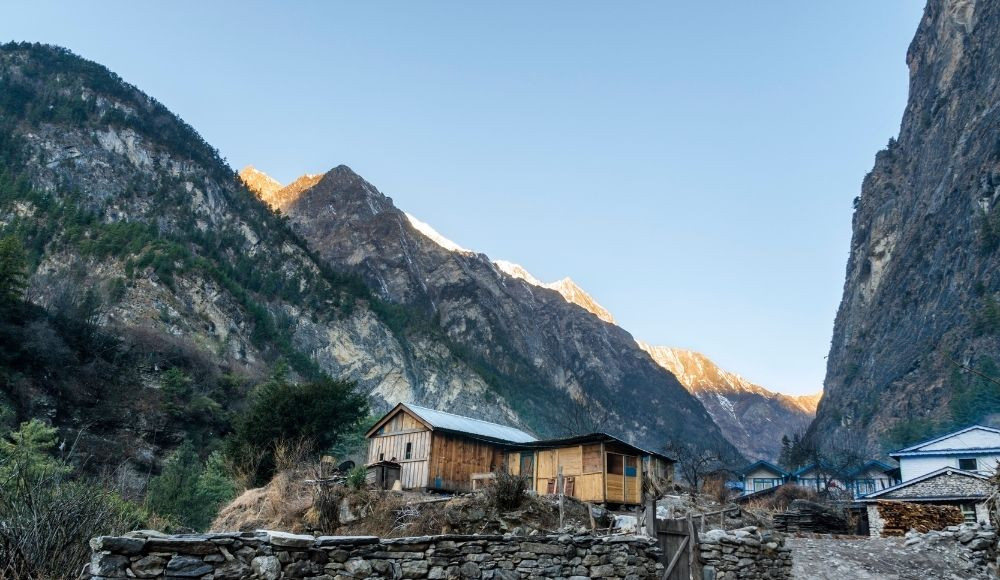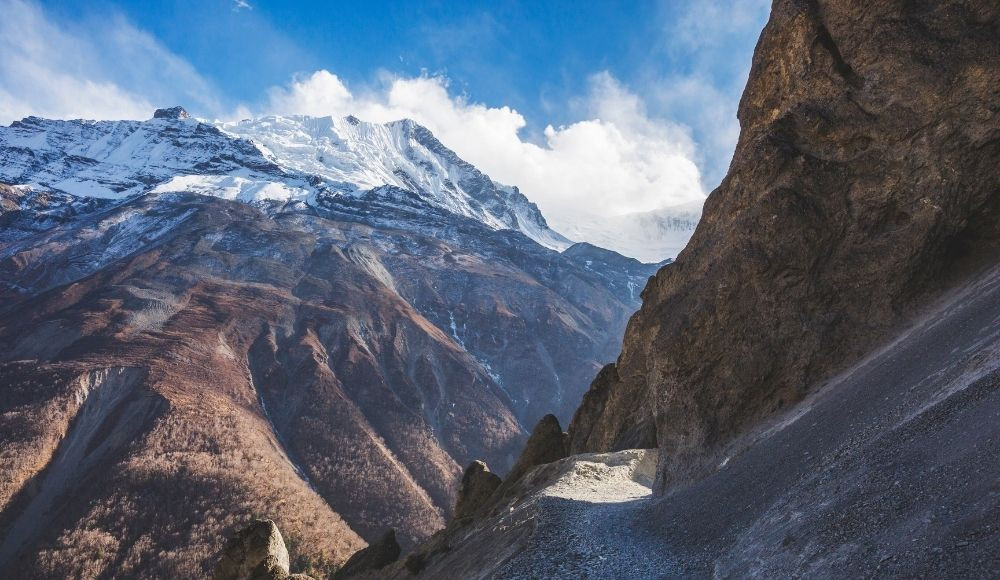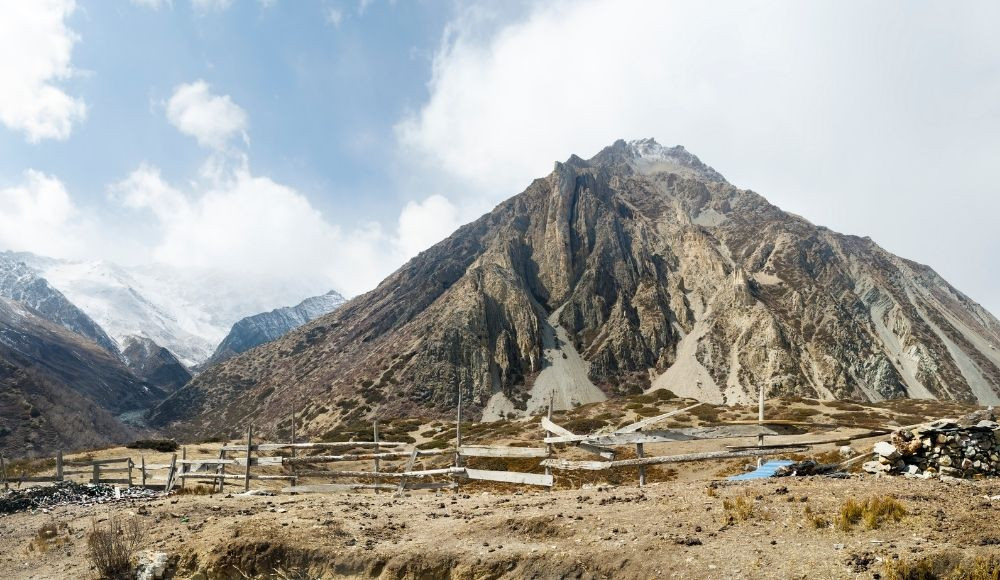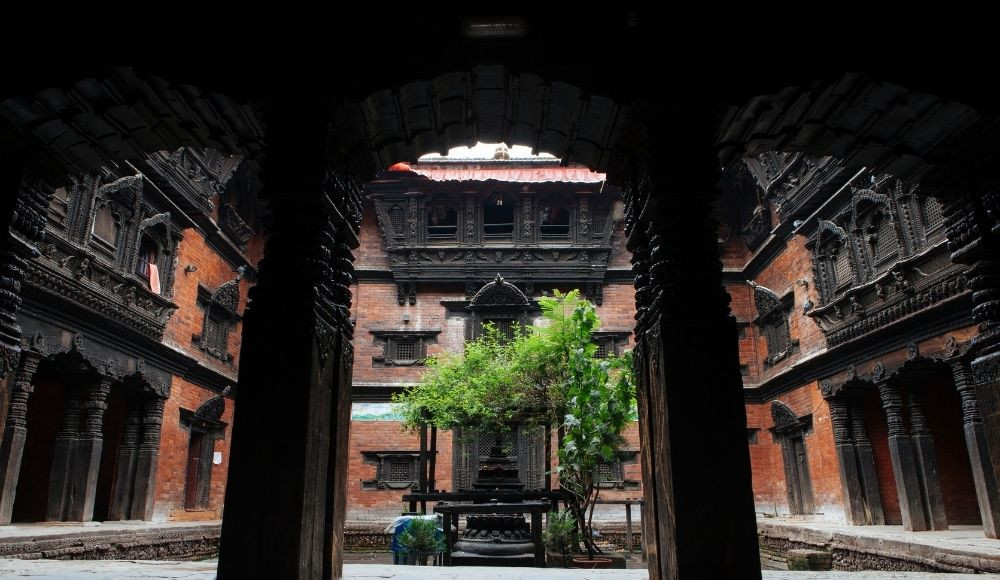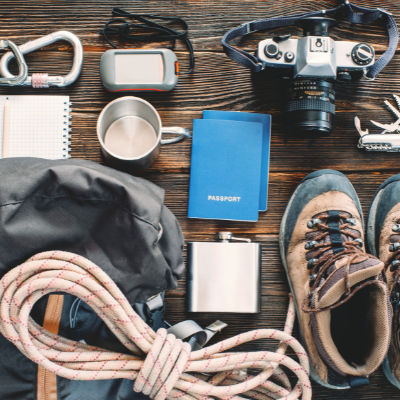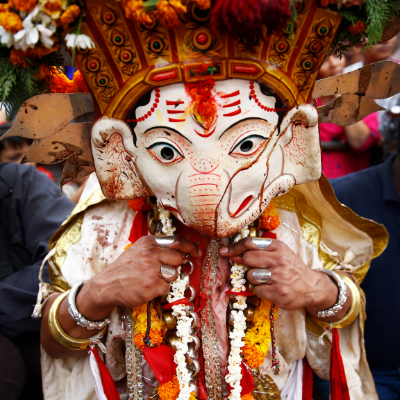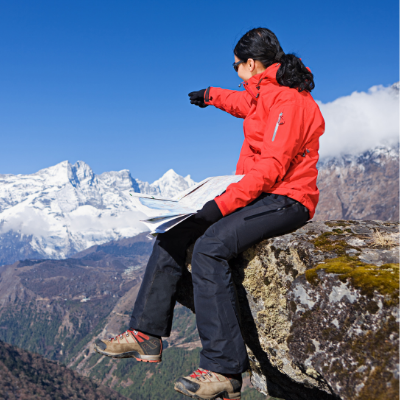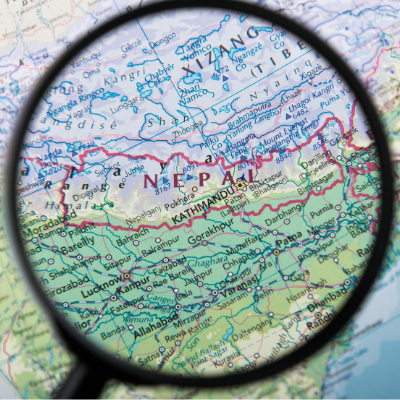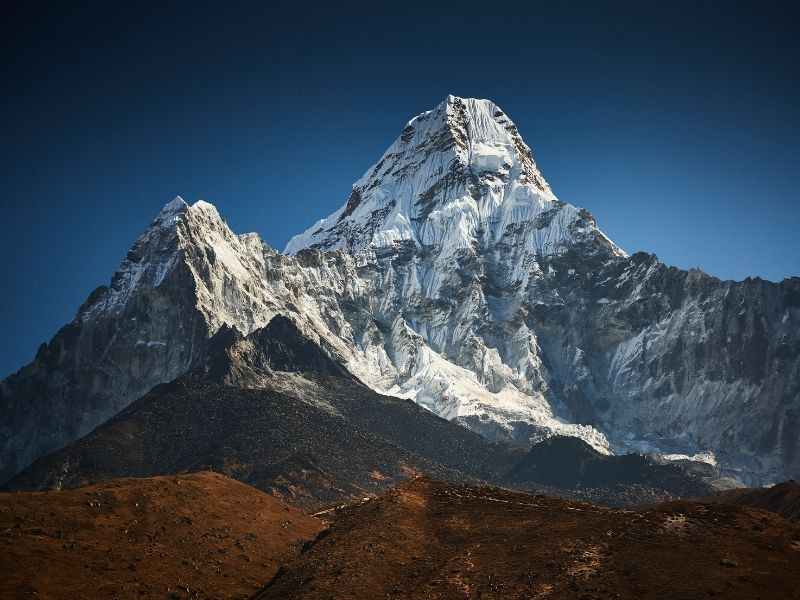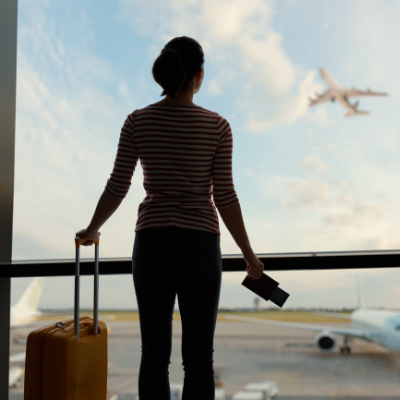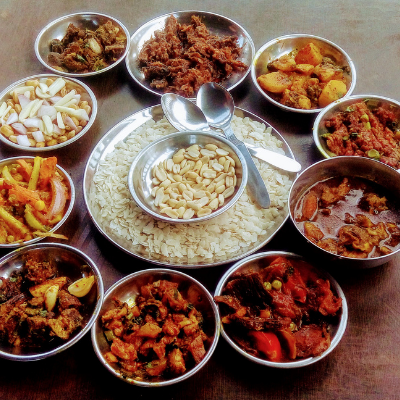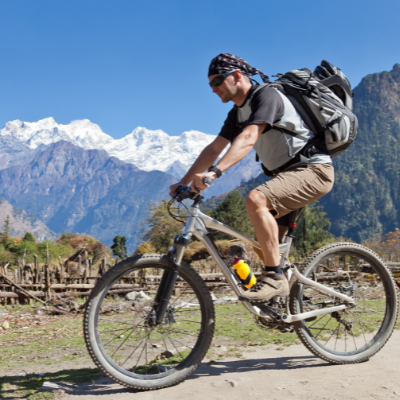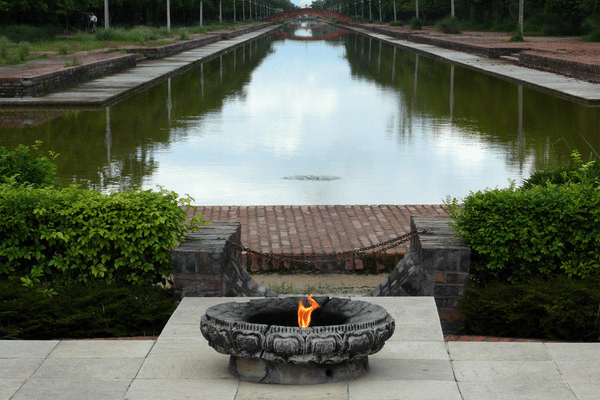In this trek, the former trek to Annapurna Circuit and Tilicho Lake is shortened. On the first day, you will be directly driving to Dharapani skipping trekking in some villages such as Bhulbhule and Chamje. You will directly begin your trekking from Dharapani to Koto and Upper Pisang.
From Upper Pisang, you will be trekking to Manang village where you will acclimatize and spend two days. The incredible culture and arid valleys are the major things to explore in Manang village. From Manang, you will trek towards Yak Kharka, trailing in the classic Annapurna Circuit Trail to reach Thorong High Camp at 4925 m. From Thorong High Camp, you will cross Thorong La Pass.
After crossing the incredible Thorong La pass, you will descend down to the Muktinath and Jomsom. From Jomsom, you will catch an early flight and return to Pokhara valley. A daytime flight from Pokhara valley will take you back to Kathmandu.
This trek concludes your Annapurna Circuit Trek. It is shortened to make your trip efficient and effective and allows you to explore the most admired Annapurna Circuit Trek in the Annapurna region of Nepal.
The brief itinerary of the short Annapurna Circuit Trek is mentioned here.
Day 01: Drive to Dharapani [1860 m/6103 ft]
A drive from Kathmandu will take you to the beautiful Dharapani villages. Passing through the different villages and scenic jungle throughout the way is the best part of the drive to Dharapani. It takes about 7 hours to reach Darapani from Kathmandu. The stopover of the day is at a guest house in Dharapani.
Day 02: Trek from Dharapani to Koto [2600 m/8530 ft]
This day, you will begin trekking from Dharapni to Koto. The beautiful waterfalls, small villages, terraced farmlands and the spectacular Himalayas seen during the trail are fascinating parts of the day. You can witness the spectacular Annapurna mountains and explore the local authentic culture during the trek.
Day 03: Trek from Koto to Upper Pisang [3300 m/10827 ft]
The trekking from Koto to Upper Pisang is the most spectacular one. You can witness various mountains, cliffs, villages and beautiful jungle. In the upper parts, the arid geography starts which is also a wonderful sight to see. It takes about 6 hours of trek to reach there.
Day 04: Trek from Upper Pisang to Manang [3540 m/11614 ft]
Trekking in the arid meadows and exploring the beautiful dry land while heading towards one of the most astonishing villages of Nepal, Manang, is the best part of the day. The beautiful mountains, spectacular Himalayas and arid valleys seen from the trail make the experience overwhelming. It takes about 6 hours to reach Manang from Upper Pisang. You will be staying at Manang this day.
Day 05: Acclimatization in Manang [3540 m/11614 ft]
This is the acclimatization day. Explore the local culture, traditions and lifestyle that is so different from other parts of the trail. Acclimatization walk to the outskirts, nearby lakes and vantage points reward you with the best experience that this Manang village has to offer.
Day 06: Trek from Manang to Yak Kharka [4050 m/13287 ft]
After spending two nights in the beautiful Manang village, you will trek toward Yak Kharka. Trekking trail slowly ascends to Yak Kharka and the trail passes through arid trails, beautiful valleys and villages. The semi alpine climate here is very attractive and so unique than other parts of the trail.
Day 07: Trek to Thorong High Camp [4925 m/16158 ft]
This day is strenuous in terms of elevation gain. However, this day will reward you with the mindblowing atmosphere in the upper elevations of Nepal. Reaching the iconic Thorang High Camp is the major aim of the day. However, you can witness the beautiful mountain panoramas and high mountain settlements during the trek.
Day 08: Trek from High Camp to Muktinath [3760 m/12335 ft]
You will begin trekking early in the morning from Thorong High Camp. This day, you will cross the challenging but wonderful Thorong La Pass. The beginning is difficult but as you descend towards Muktinath, the trail is downwards and offers spectacular views of the mountain valleys and Himalayas.
Day 09: Trek from Muktinath to Jomsom [2720 m/8923 ft]
You can explore the holy abode Muktinath temple early morning and descend towards the Jomsom. Jomsom is a popular spot in the mustang region of Nepal. This place is wonderful as you can explore a diverse ethnicity, culture, mountains, beautiful terrains and captivating sight of the mountain lifestyle.
Day 10: Fly from Jomsom to Pokhara, Fly to Kathmandu [1350 m/4430 ft]
You will catch an early flight from Jomsom to reach Pokhara and a daytime flight from Pokhara will take you back to the Kathmandu valley.
Related Article: Short Annapurna Circuit Trek



